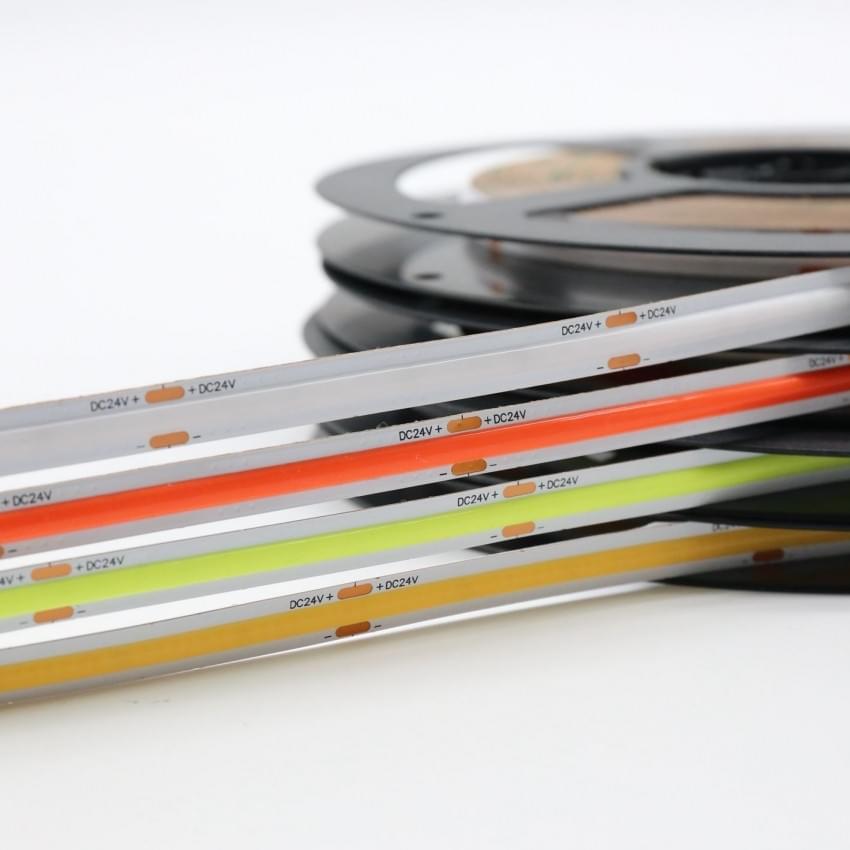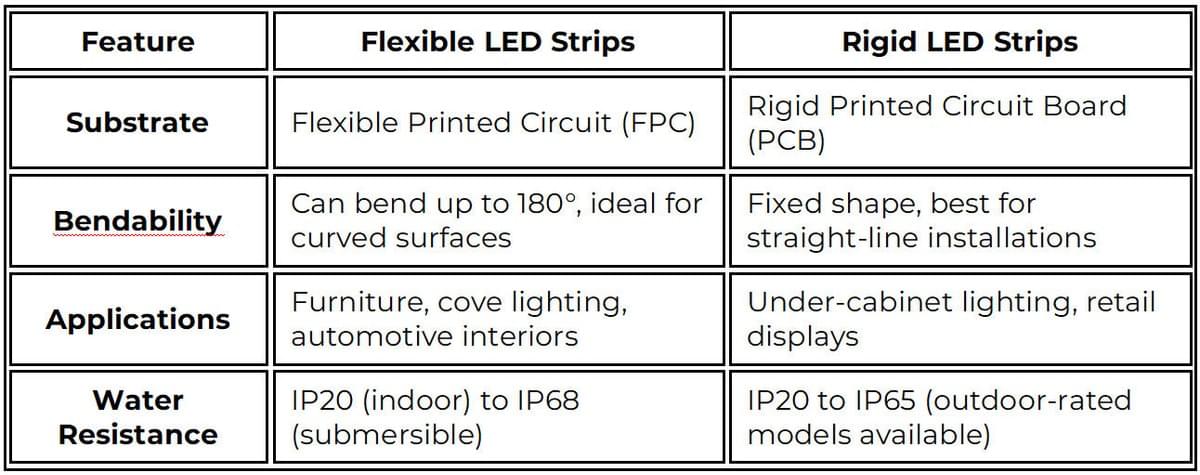LED Strip Lights 2025: The Complete Guide to Trends, Types, and Smart Lighting Solutions
LED Strip Lights 2025: The Complete Guide to Trends, Types, and Smart Lighting Solutions

In the dynamic world of lighting technology, LED strip lights have emerged as a versatile and transformative solution, revolutionizing how we illuminate and decorate spaces. As we step into 2025, the global LED strip light market is poised for unprecedented growth, driven by advancements in smart home integration, sustainability initiatives, and innovative applications across industries. This comprehensive guide explores the latest trends, product types, buying considerations, and practical applications to help you navigate the evolving landscape of LED strip lights.
1. Market Trends Shaping LED Strip Lights in 2025
The LED strip light industry is experiencing a period of rapid innovation, with 2025 set to be a pivotal year for growth and technological breakthroughs. Here’s an in-depth look at the key trends driving the market:
1.1 Explosive Growth Driven by Smart Home Integration
The rise of the Internet of Things (IoT) and AI-powered home systems has catapulted smart LED strip lights into the mainstream. In 2025, voice control, scene automation, and inter-device synchronization are no longer optional features but standard expectations. According to industry reports, the global smart lighting market is projected to reach $115.73 billion by 2025, with LED strips accounting for a significant portion of this growth.
Key Drivers:
o Compatibility with platforms like Amazon Alexa, Google Home, and Apple HomeKit.
o Demand for customizable ambiance (e.g., color-changing strips for movie nights or productivity modes).
o Integration with sensors for motion detection and energy optimization.
1.2 Sustainability and Energy Efficiency
As global “net-zero” goals gain momentum, energy-efficient lighting solutions are becoming mandatory. LED strip lights, with their low power consumption and long lifespan (80,000–100,000 hours), are replacing traditional incandescent and fluorescent lighting in both residential and commercial settings.
Policy Impact:
o Stricter energy efficiency regulations in the EU, U.S., and China are phasing out high-wattage bulbs, driving demand for LED alternatives.
o Green building certifications (e.g., LEED, BREEAM) now prioritize LED lighting, boosting adoption in construction projects.
1.3 Emerging Applications Beyond Traditional Lighting
2025 is witnessing LED strip lights expand into novel sectors, breaking free from conventional use cases:
· Automotive: Interior ambient lighting in electric vehicles (EVs) and luxury cars, enhancing passenger experience.
· Metaverse & Entertainment: Virtual production studios using RGBW strips to simulate dynamic environments.
· Agriculture: Precision lighting for vertical farms, with adjustable spectra to optimize crop growth.
· Healthcare: Circadian rhythm-adjusting strips in hospitals to improve patient recovery and staff alertness.
1.4 Technological Advancements: COB and Micro LED
Two technologies are dominating 2025’s innovation landscape:
· COB (Chip-on-Board): Offers uniform light distribution, higher brightness (up to 2,000 lumens/m), and reduced glare, making it ideal for task lighting and commercial displays.
· Micro LED: Ultra-small LEDs (≤100μm) deliver superior color accuracy and durability, targeting high-end applications like home theaters and architectural lighting.
2. Types of LED Strip Lights: Choosing the Right Fit
LED strip lights are not one-size-fits-all. Understanding their variations ensures you select the perfect product for your needs.
2.1 Flexible vs. Rigid LED Strips

2.2 LED Chip Types and Specifications
The choice of LED chip impacts brightness, color accuracy, and energy efficiency:
· 5050 LEDs: The most popular choice, offering 15–20 lumens per chip and RGB color options. Ideal for decorative lighting.
· 2835 LEDs: Smaller and more energy-efficient (8–10 lumens/chip), suitable for subtle ambient lighting.
· COB LEDs: Multiple micro-chips on a single board, providing seamless illumination with minimal hotspots.
· RGBW LEDs: Combine red, green, blue, and white chips for full-spectrum color control and warm/cool white adjustment.
2.3 Color Temperature and CRI: Setting the Right Mood
· Color Temperature (K):
o Warm White (2700K–3000K): Cozy and inviting, perfect for bedrooms and living rooms.
o Natural White (4000K–4500K): Balanced and bright, ideal for kitchens, offices, and retail spaces.
o Cool White (5500K–6500K): Crisp and energizing, used in garages, workshops, and commercial areas.
· Color Rendering Index (CRI): Measures how accurately light reveals colors. For makeup rooms, art studios, or retail, choose CRI ≥ 90; for general use, CRI ≥ 80 suffices.
2.4 Waterproof Ratings: IP Codes Explained
· IP20: Non-waterproof, for dry indoor areas (e.g., bookshelves).
· IP44/IP55: Splash-resistant, suitable for kitchens, bathrooms, and covered patios.
· IP65/IP67: Water-resistant, ideal for outdoor gardens, pools, and automotive exteriors.
· IP68: Submersible, used in aquariums and underwater lighting.
3. 2025 Buying Guide: How to Select LED Strip Lights
Investing in LED strips requires careful consideration of technical specs and practical needs. Follow this step-by-step checklist:
3.1 Define Your Purpose
· Ambient Lighting: Prioritize dimmable, low-brightness strips (300–500 lumens/m) with warm CCT.
· Task Lighting: Opt for high-brightness COB strips (1,000–2,000 lumens/m) with natural white light (4000K).
· Outdoor Use: Ensure IP65+ rating, UV-resistant coating, and durable wiring.
3.2 Calculate Power and Voltage Requirements
· Voltage: 12V strips are common for home use (safer, shorter runs), while 24V strips suit longer installations (up to 10m) with minimal voltage drop.
· Power Supply: Multiply strip length (m) by wattage per meter (W/m) and add 20% buffer. For example, 5m of 12W/m strip needs a 72W (5×12×1.2) power adapter.
3.3 Smart Features and Connectivity
· Controllers: Choose between RF remotes (simple), Wi-Fi (app control), or DMX (professional stage lighting).
· Matter Protocol: Look for Matter-certified strips for seamless integration with smart home ecosystems (2025’s industry standard).
3.4 Top Brands to Consider
· International: Signify (Philips Hue), Acuity Brands, Panasonic.
· Secondary brand: Govee (smart RGB strips), Nexillumi (budget-friendly), Lepro (COB technology).
4. Installation and Maintenance Tips for Longevity
Proper installation ensures safety and optimal performance:
4.1 Step-by-Step Installation
1. Prepare the Surface: Clean and dry the area; use rubbing alcohol for grease removal.
2. Measure and Cut: Most strips have cut marks every 3–5 LEDs (check manufacturer guidelines).
3. Connect Power: Use soldering or plug-and-play connectors for secure wiring.
4. Mounting: Use 3M adhesive (indoor) or aluminum channels (outdoor/heat dissipation).
4.2 Maintenance Best Practices
· Dust Regularly: Use a soft brush to prevent overheating.
· Check Connections
: Tighten loose wires to avoid flickering.
· Replace Drivers Promptly: Faulty power supplies can damage strips; replace with OEM parts.
5. Conclusion: Illuminate Your Space with 2025’s Best LED Strips
LED strip lights have evolved from mere accessories to essential components of modern lighting design. With 2025’s focus on smart integration, sustainability, and cutting-edge tech like COB and Micro LED, there’s never been a better time to upgrade. Whether you’re revamping your home, enhancing a commercial space, or exploring innovative applications, this guide equips you to make informed choices.
Ready to transform your environment? Start by identifying your needs, exploring trusted brands, and embracing the future of lighting—one strip at a time.
